I actually arrived in Kobe the previous day at around mid-afternoon and I stayed at a hotel north of the main Sannomiya (三宮) railway station called the Hotel Area One. In all my travels around Japan, it was one of the worst stays I ever had in a hotel. The hotel was located right behind a shrine and in preparation for the new year, the shrine was open for some sort of festival the entire night and because buildings in Japan generally have poor noise insulation, from the room, the noise was so loud that I could hardly sleep!
Generally in my opinion, there are not a good range of easily accessible hotels in Kobe, it is often better to stay in a hotel in Osaka and just take the 30 minute train ride to Kobe as there is a large selection of affordable and cheap hotels in Osaka.
One of the reasons for visiting Kobe (again) was to see the areas of Kobe that I had never seen before this was mainly the Kobe new town suburbs, Arima Onsen (有馬温泉) and Mt. Rokko (六甲山).
One of the interesting things I saw by chance in Kobe, the Gigantor (鉄人28号, Tetsujin 28-gō) statue.

I visited many places in Kobe on this day going from the far western suburbs all the way to the eastern most part on Mt. Rokko.
View 2011-12-31 Kobe, Arima Onsen in a larger map
The previous day I had to take the train to Kobe from Kakogawa where I was dropped off and I noticed a "Kansai special" - the all day Women Only train cars. This was the first time I had seen such a thing (I had previously seen peak-period Woman Only train cars in the Tokyo area).
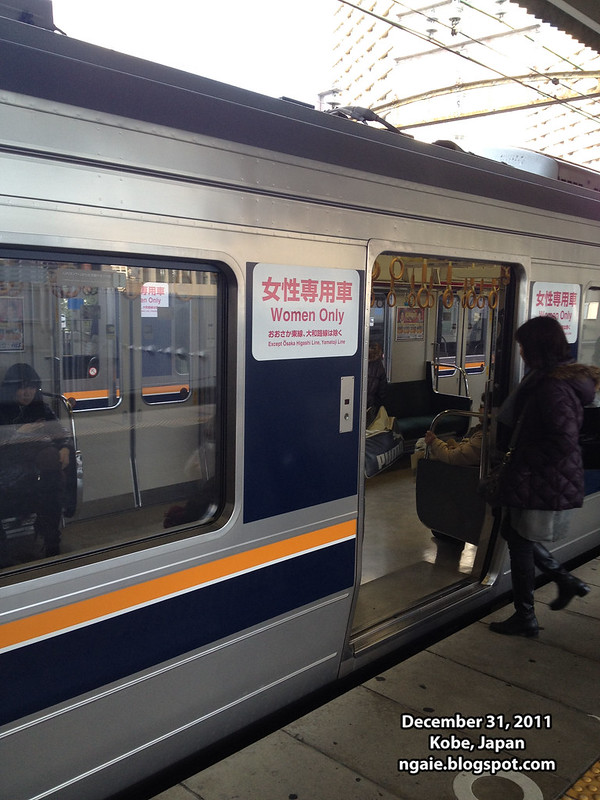
I started the day by buying a one day pass of the subway system and tickets for the subway and a combination discount ticket for the ropeway and cable cars for Arima Onsen and Mt. Rokko. In Japan, transportation in general is very expensive and if you don't do proper research on the discount tickets available, your travels will cost you can arm and a leg.
The 1 day subway ticket cost 1,000 yen (US$10) which was a fair price but the ropeway and cable car ticket cost 1,700 yen (US$17) which I thought was kind of pricey.

My first destination of the day was to visit and see what the suburbs of Kobe looked like because I wanted to get a feel of the city of Kobe outside of its touristy areas. I don't think many people would go to these places but as a student of transport and urban planning, I naturally had an interest in visiting these "unconventional" attractions.
One of the benefits of wandering around urban areas by foot is that you discover a lot of interesting things by chance. To visit the suburbs of Kobe located at the northwest of the city, I had to change trains at Shinnagata (新長田) station and in the subway I saw an advertisement for some sort of statue from an anime.
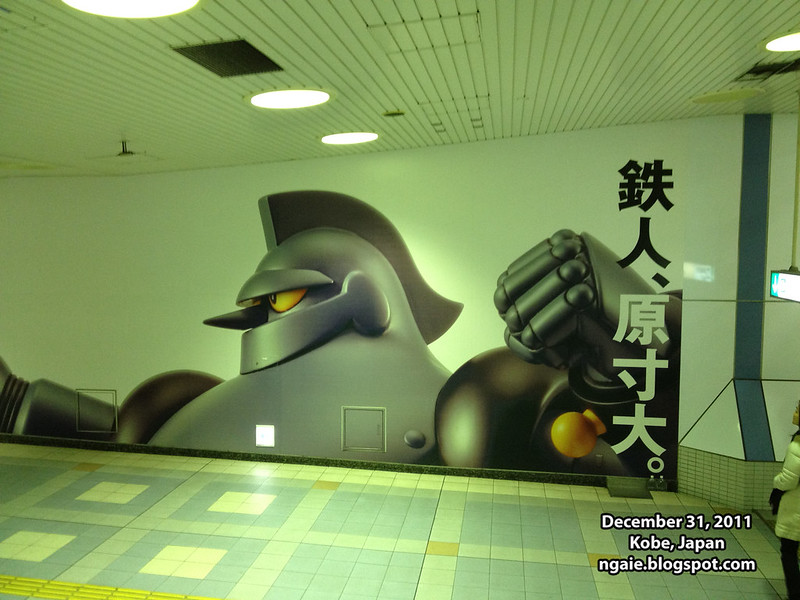
After getting out of the station, I found that it was the Gigantor statue which I describe earlier. It was actually bigger than expected. I read that they built the status to symbolize Kobe's recovery from the 1995 Kobe earthquake. The statue was only completed recently in 2009.
Indeed the area around the statue looked like it had been completely rebuilt as you could tell which areas had been hit hard by the quake.
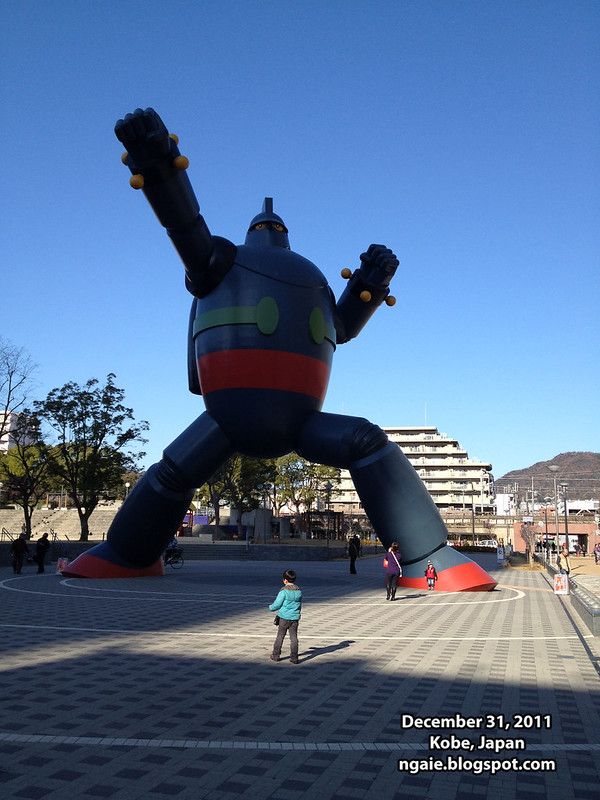
After walking around the area a bit, I spotted an interesting shoe statue in front of a shoe store.
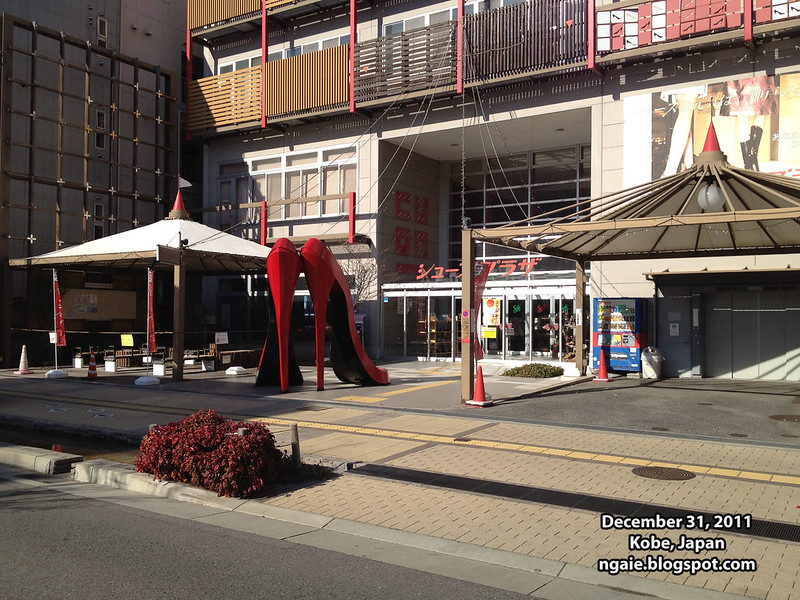
Next I went to the north-west suburbs of Kobe to see what a master-planned community looked like. I gained interest in the new towns of Japan after working as an intern in the previous summer of 2011 where I worked to design a new town project for an overseas client. Also this was one of the projects I had read about in one of the academic reports on transport and new towns in Japan of how the city government of Kobe worked with private developers to design and build this new town.
The main hub of the new town, Seishin-Chuo station (西神中央駅). This was the first time that I had actually visited a master-planned new town in Japan. One thing that struck me was the lack of greenery and the abundance of concrete.

Like every other new town in Japan, it is anchored by big-name department stores and malls.

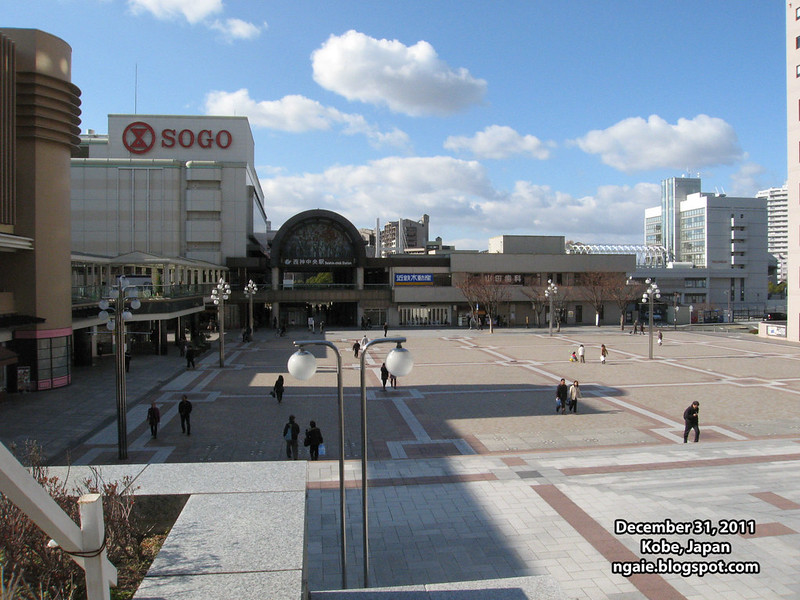
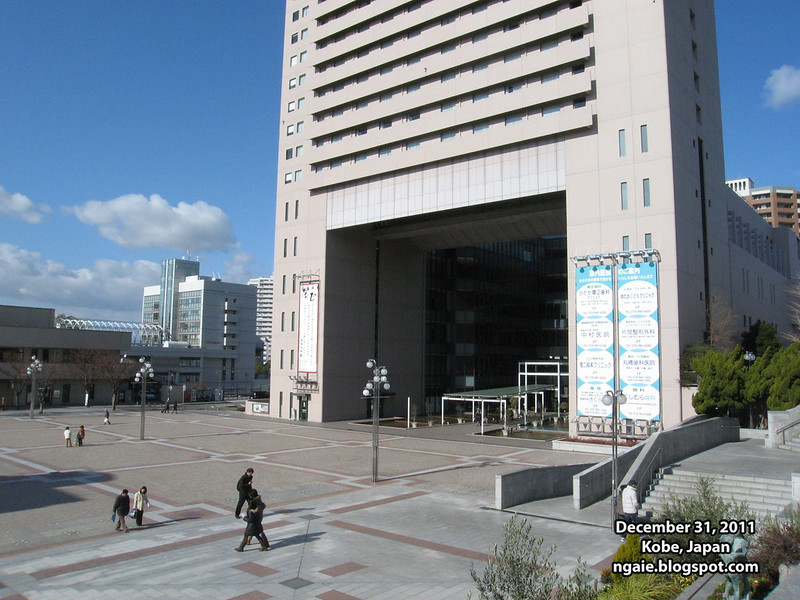
As I looked at the map, I was struck by how similar my work for the design of the new town at the internship had been with this new town. As I would find out later, almost all new towns built by Japanese companies are designed in this style.

One of the characteristic of new towns in Japan is that as you walk further away from the stations, first there are fairly uniform looking apartment buildings followed by rows of detached homes.
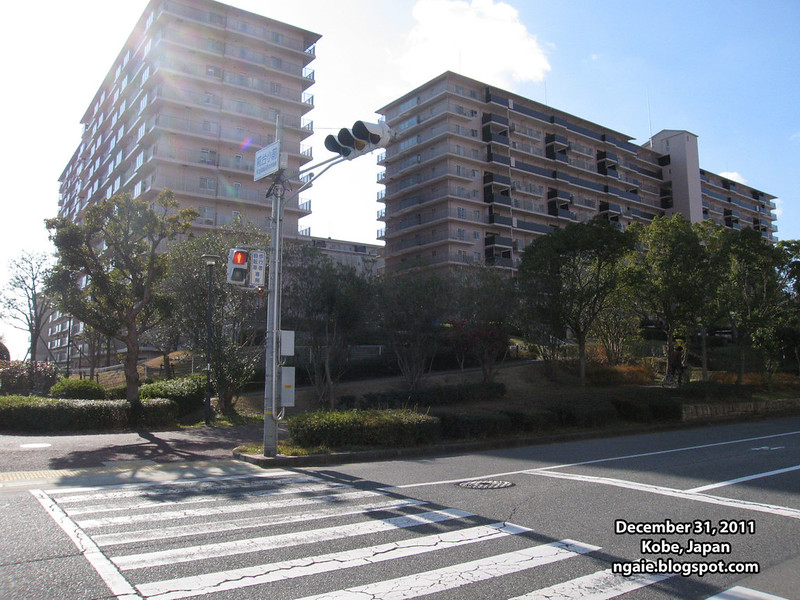
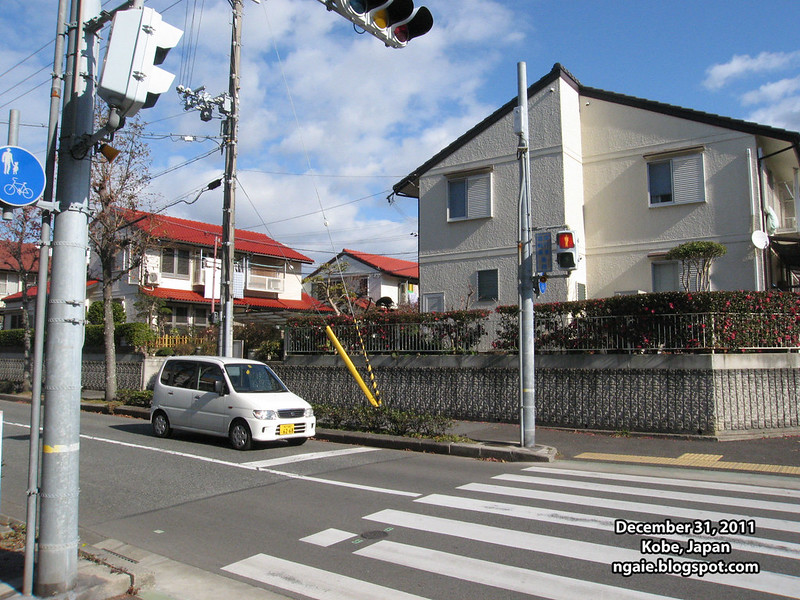
Afterwards, I took the subway to the end of the line where the development was planned as a university or college town. There wasn't much to see so I just took a walk round, had lunch and left for my next destination.
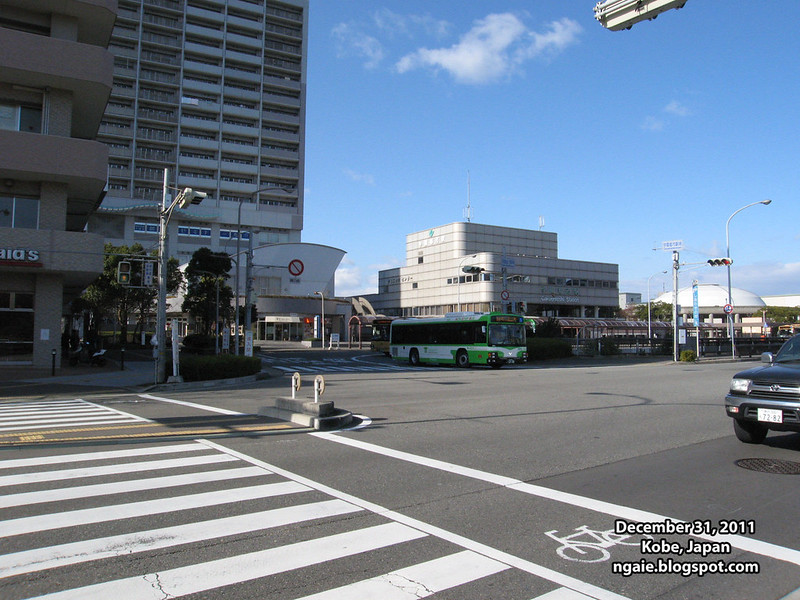
My next destination was Arima Onsen, a famous hot spring resort located in the mountains of Kobe. To get there I had to take the subway back east towards Shin-Kobe and change trains.

The train to Arima Onsen travelled north past the range of mountains that surround the central area of Kobe and I was struck at how different the urban environment was between the 2 areas. Just 10-15 minutes north of Sannomiya was completely rural, totally different from the dense urbanity of Sannomiya.
Arrival at Arima Onsen. For some reason, I felt an 80s-vibe. It seemed like many of the buildings where built during Japan's bubble economy in the 1980s. I didn't plan on going to any onset, I just wanted to walk around and see what the town looked like.
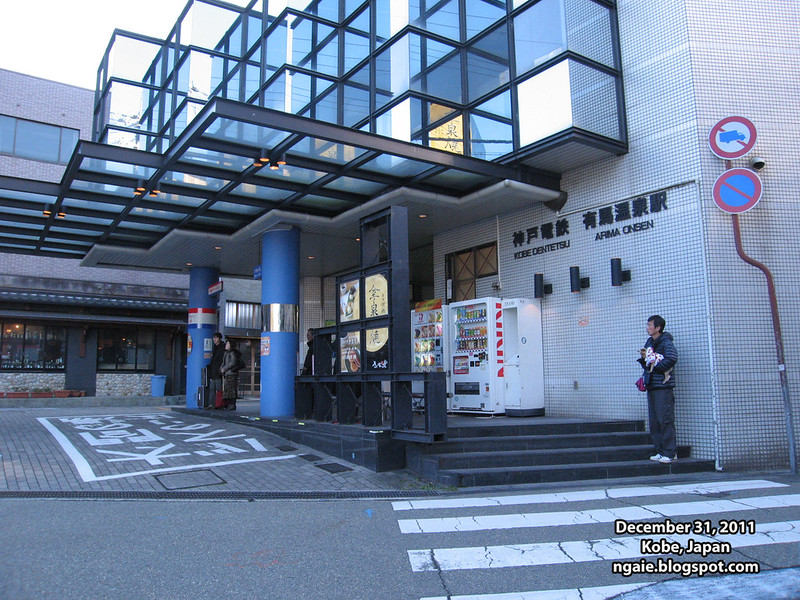
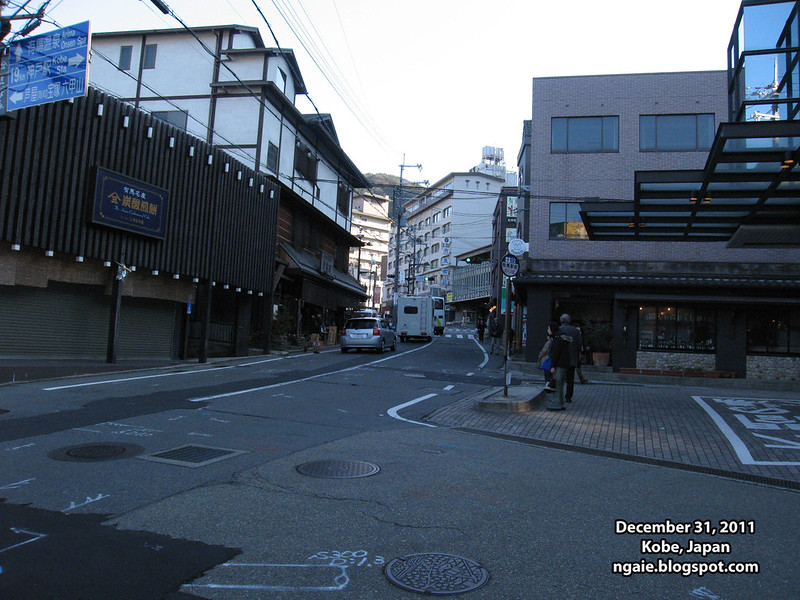

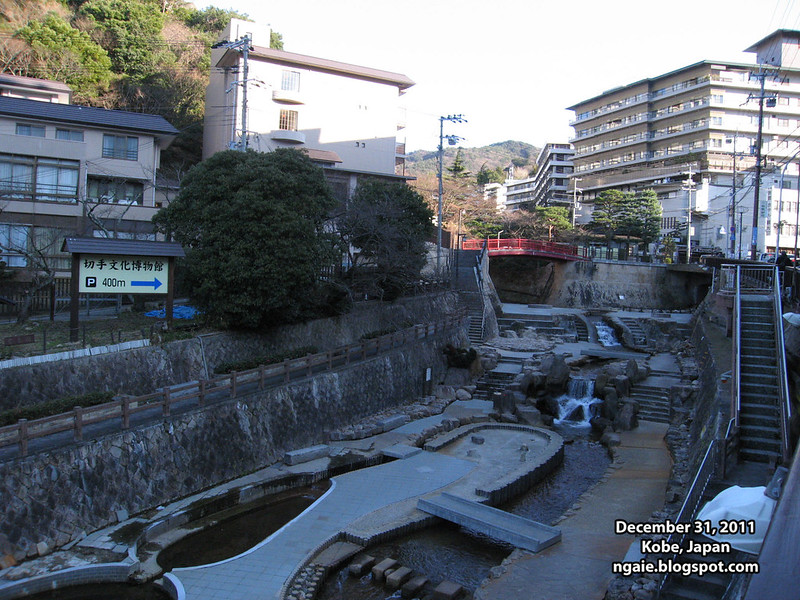


Once you get past the highly built up (and ugly) area around the railway station, you can start to get a feel of the traditional hot spring resort.

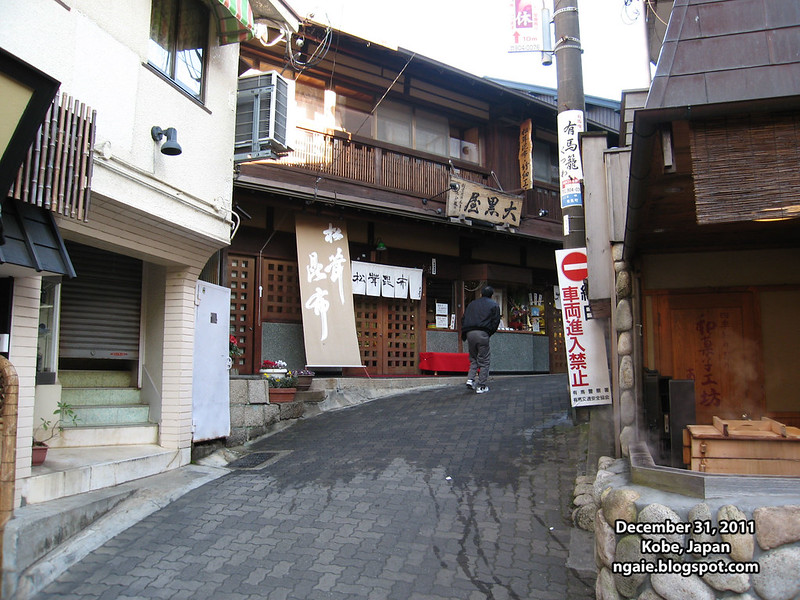
People enjoying an onsen where you can dip your feet into on the left.

Walking further up along the narrow streets heading for the ropeway that would take me to Mt. Rokko.
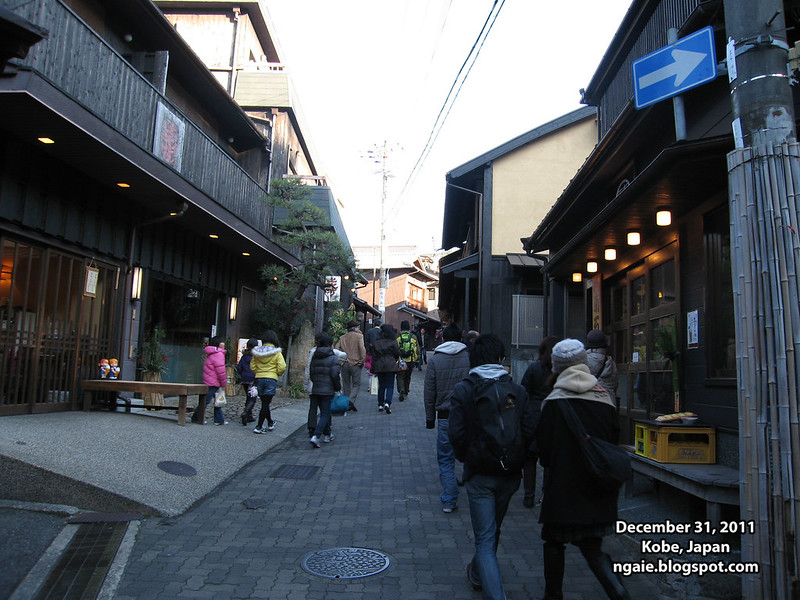
I can't believe this crazy guy wanted to drive his minivan through these narrow lanes!

The source of the hot spring.
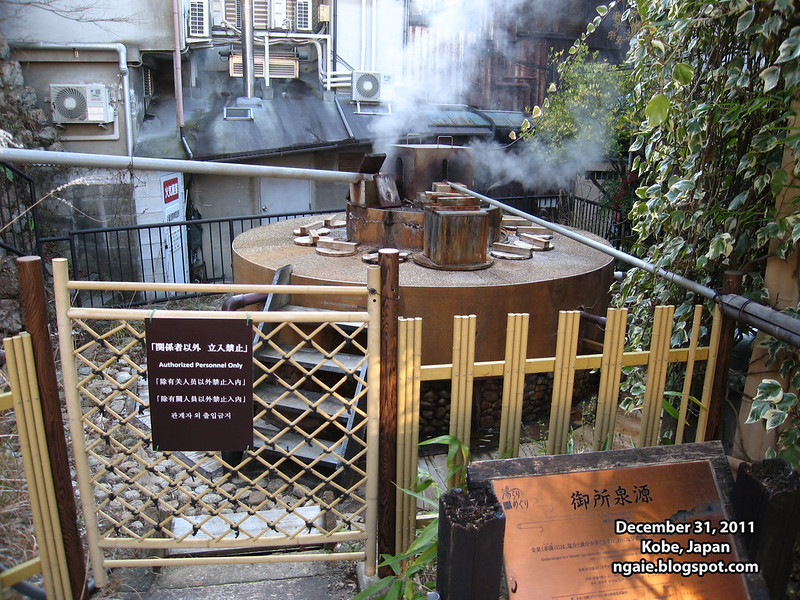
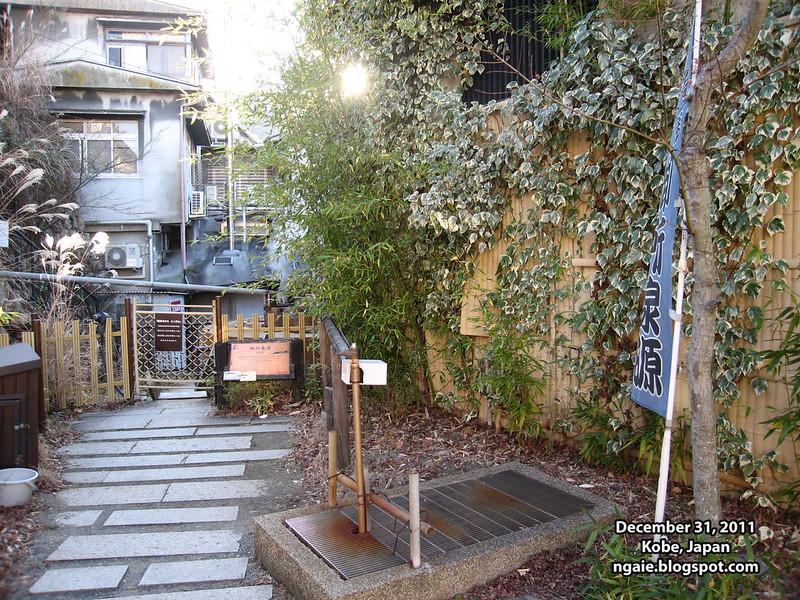
"Taiko's Drinking Spa Water", hot spring water you can drink!
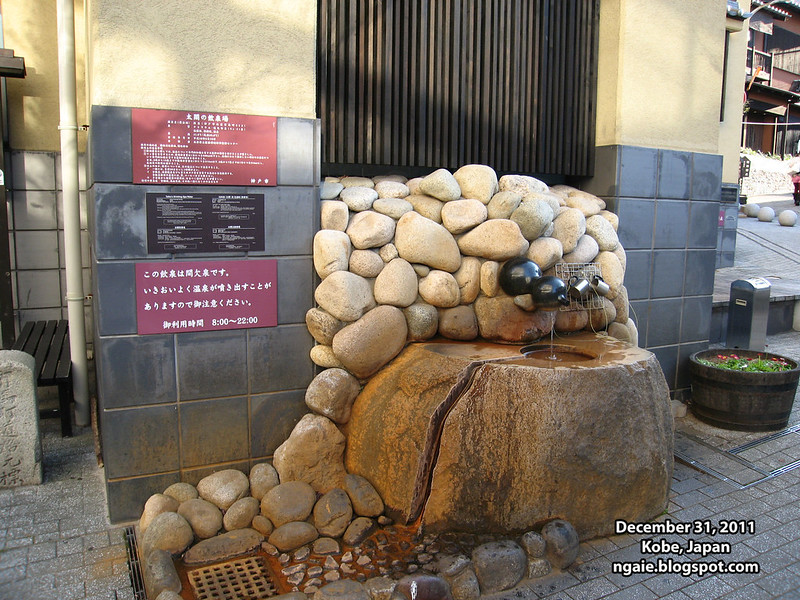
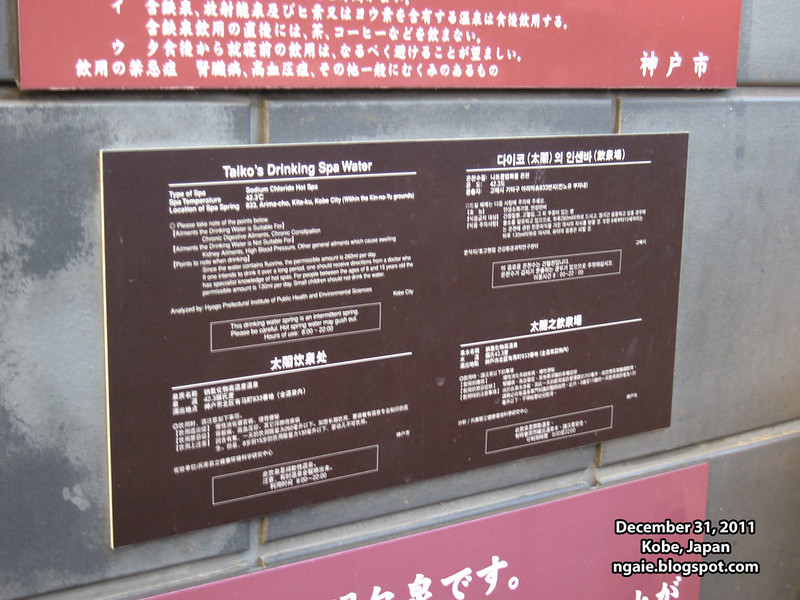
Next I walked to the ropeway station that connects Arima Onsen with Mt. Rokko. Mt. Rokko is the highest peak on the mountain range surrounding Kobe and the Osaka area and I thought it would be interesting to see the view of the Kansai area from this viewpoint.
Despite being marked prominently on the tourist maps, there was no sidewalk to the ropeway station. I had to walk on the side of the road. Also surprisingly there was absolutely no one (cars or people) on the road to the ropeway station. I am assuming during peak tourist seasons, there are shuttle buses from the onsen hotels?

Near the ropeway station there was a small waterfall park with no one there at all.

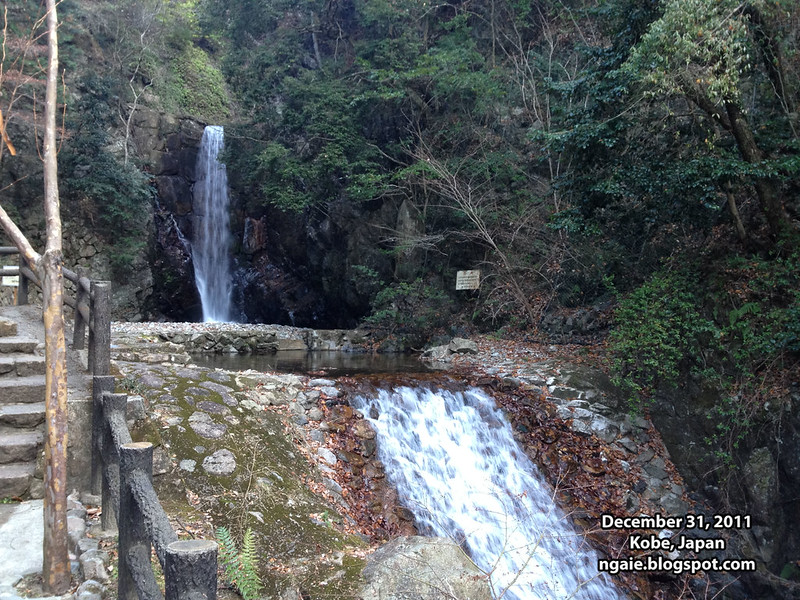
Absolutely deserted!
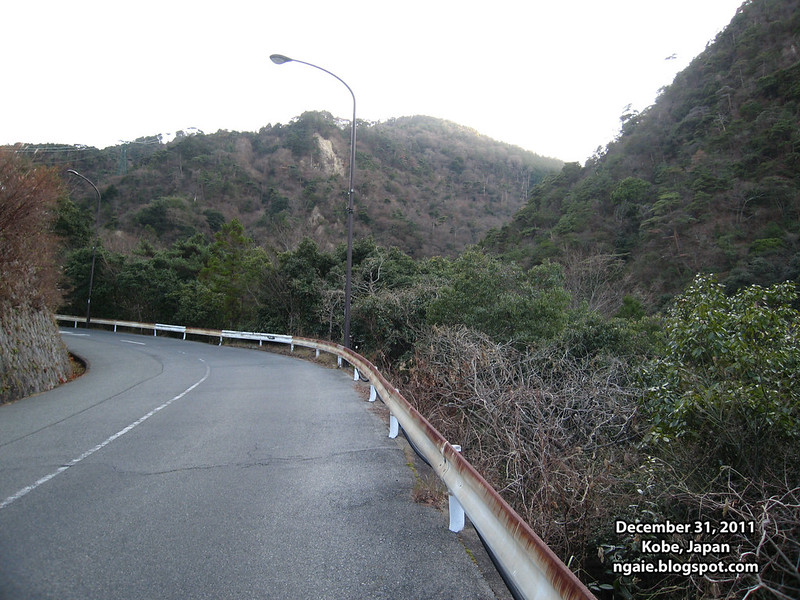


Finally, arrival at the ropeway station.
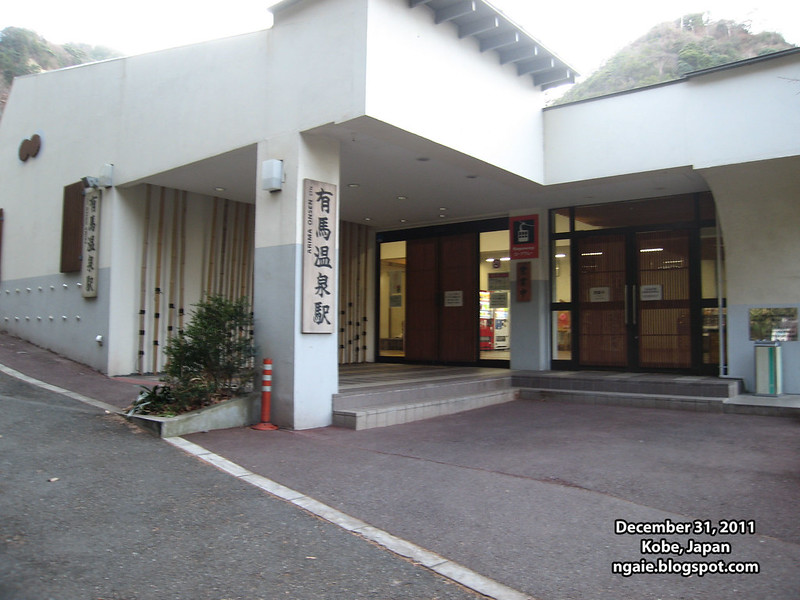
View from the ropeway car. There was only one other passenger along with the operator on the car that I boarded.
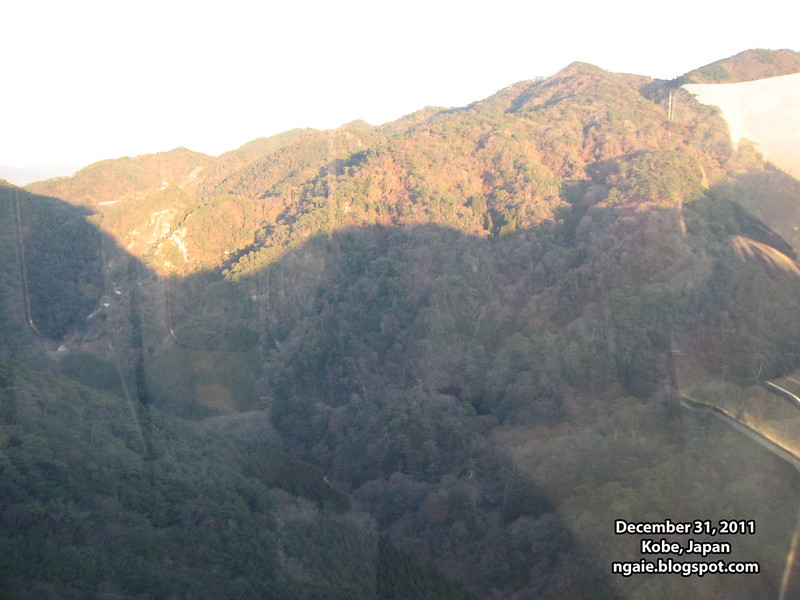
The mountains that surrounded central Kobe extend quite a bit into the distance to the north.

Arrival at the peak of Mt. Rokko and looking towards the heavily urbanized area of Osaka. You could see all the way to the central area of Umeda in Osaka from here.
At the Mt. Rokko ropeway station there were various touristy attractions including this fake castle tower to provide better views of the area.

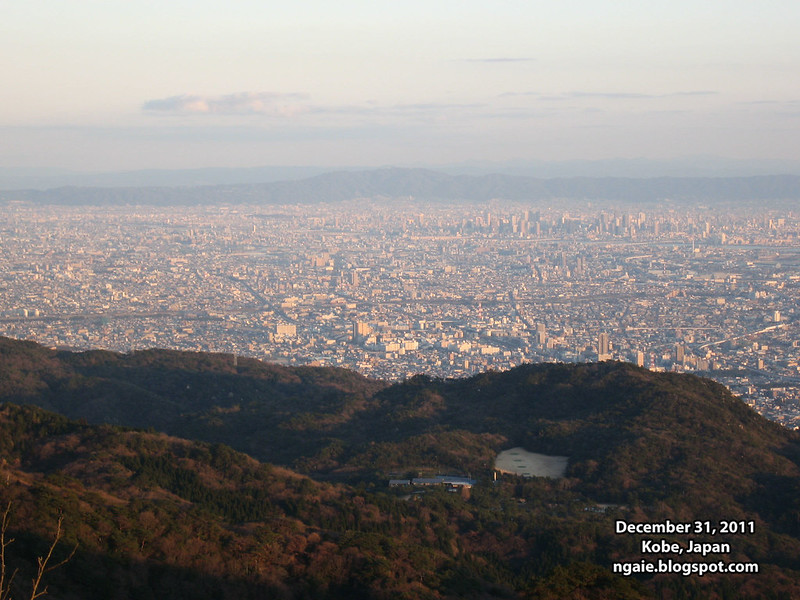

Looking towards the Osaka Bay direction.

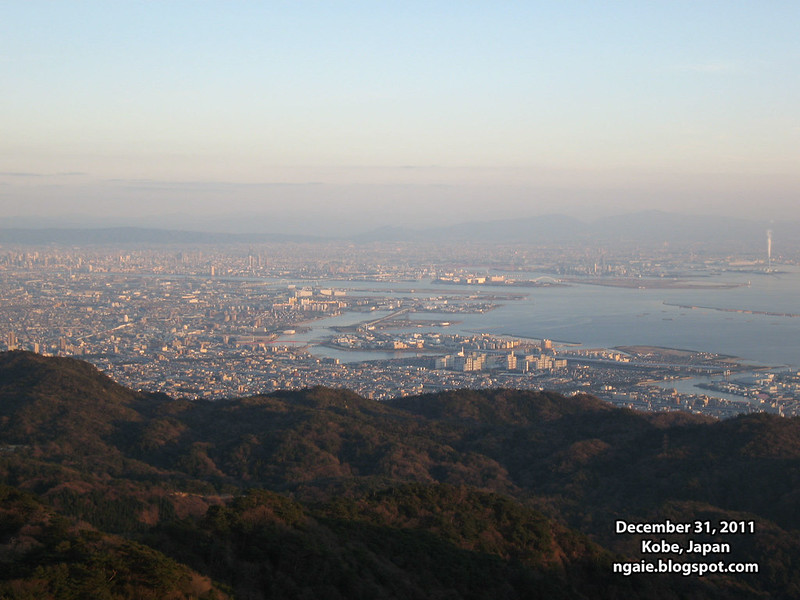
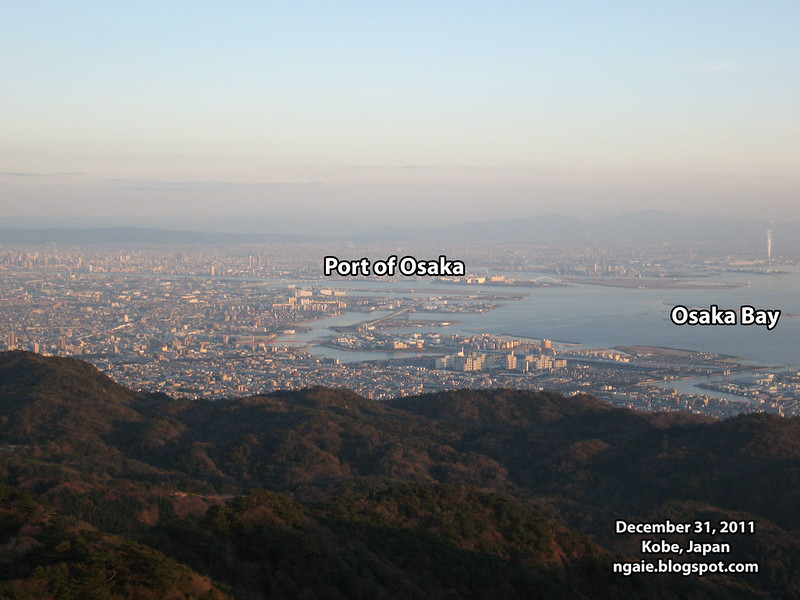
Looking directly at the Kobe direction with the three artificially reclaimed islands in the background: Rokko Island, Port Island and Kobe Airport.

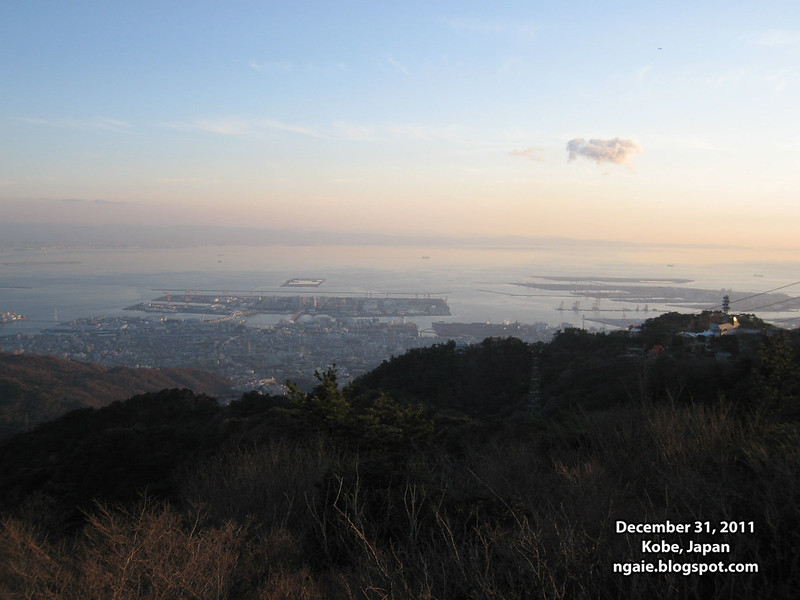
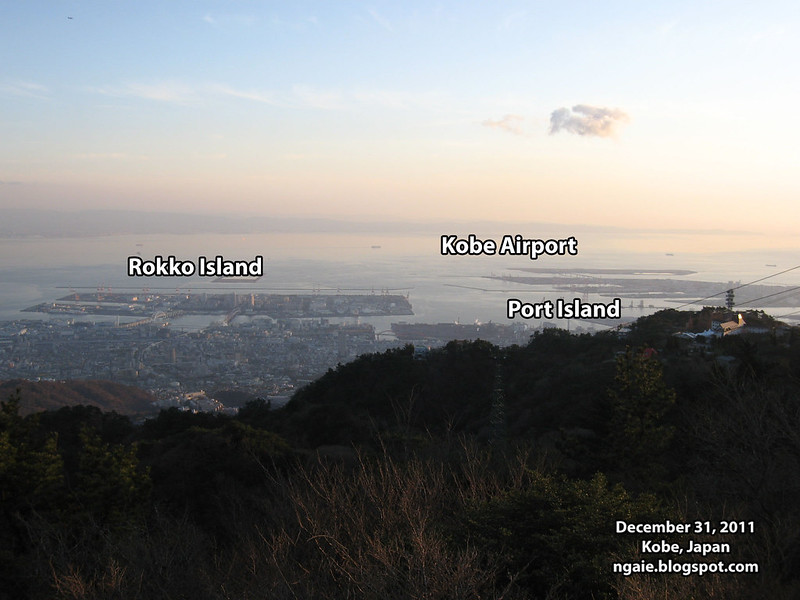
Sun setting.

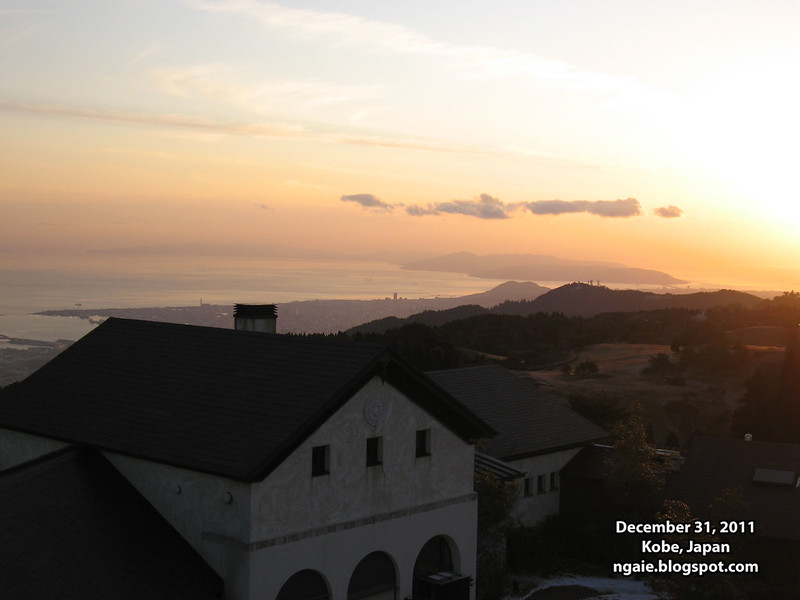
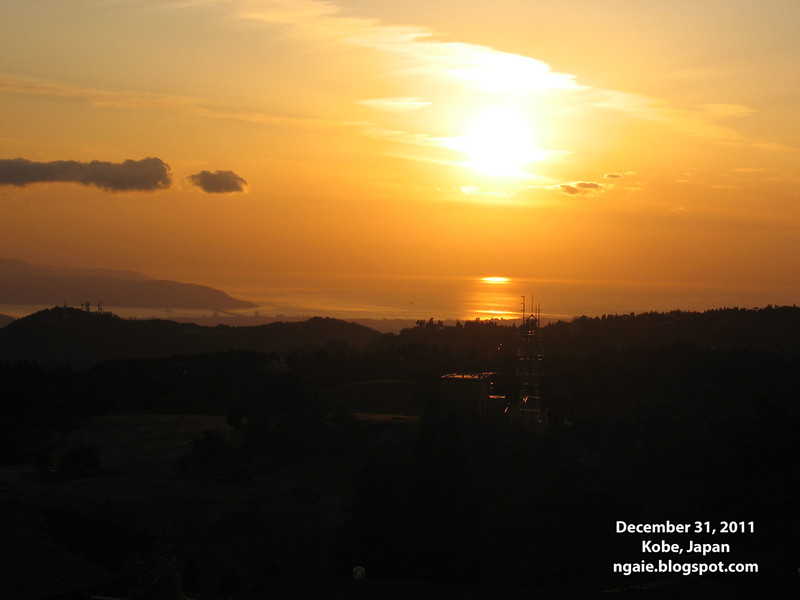
As it got dark, I took a shuttle bus from the Mt. Rokko ropeway station to the Mt. Rokko cable car station further down the mountain.
The view of Kobe from the Mt. Rokko cable car station.

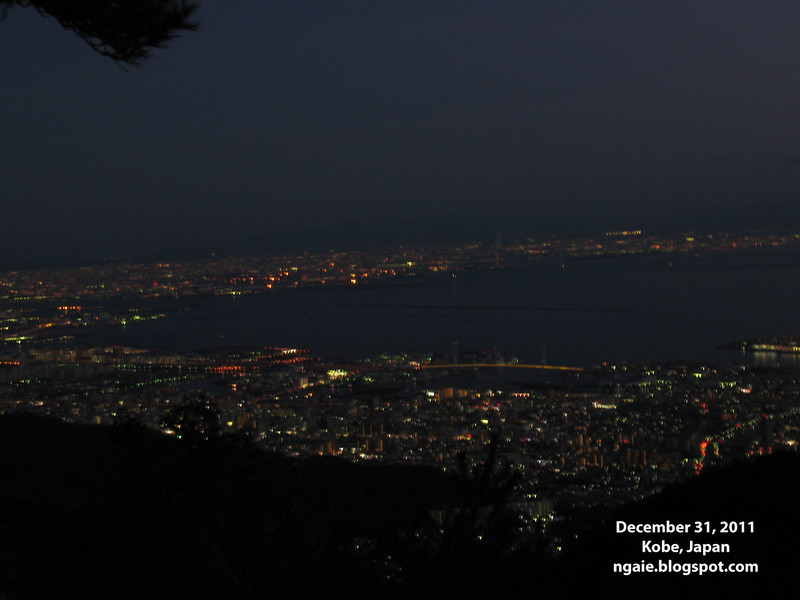
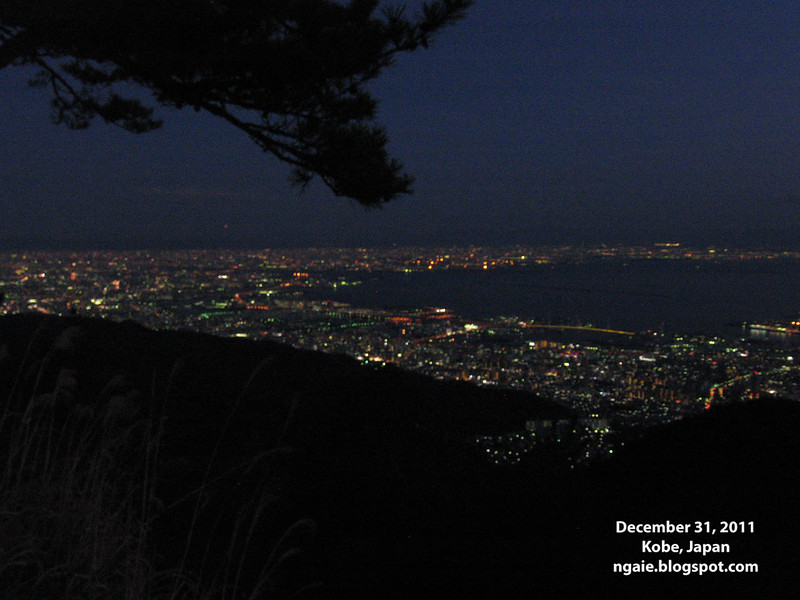


The Mt. Rokko cable car station had a nice retro feel to it, like from the pre-war era.
Bags of salt in preparation for roads freezing over.

The waiting hall.
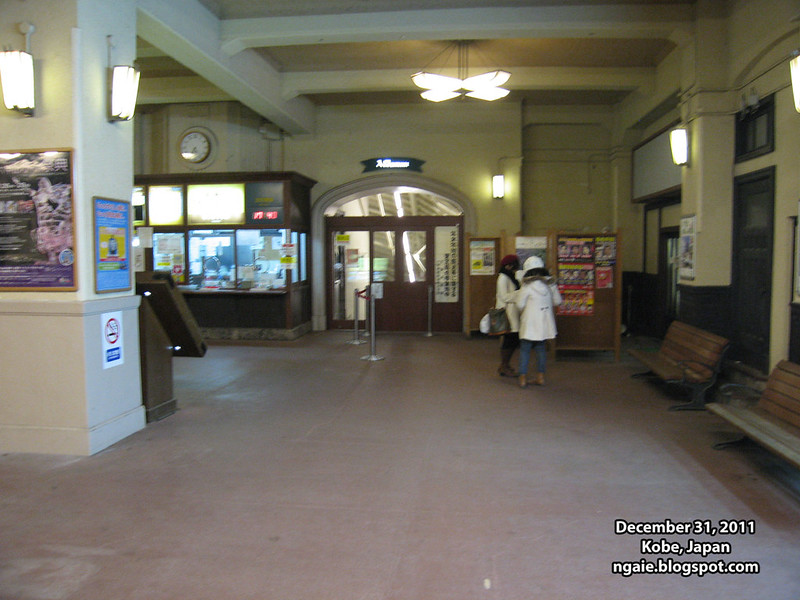
The cable car that brought me back down to the city of Kobe.

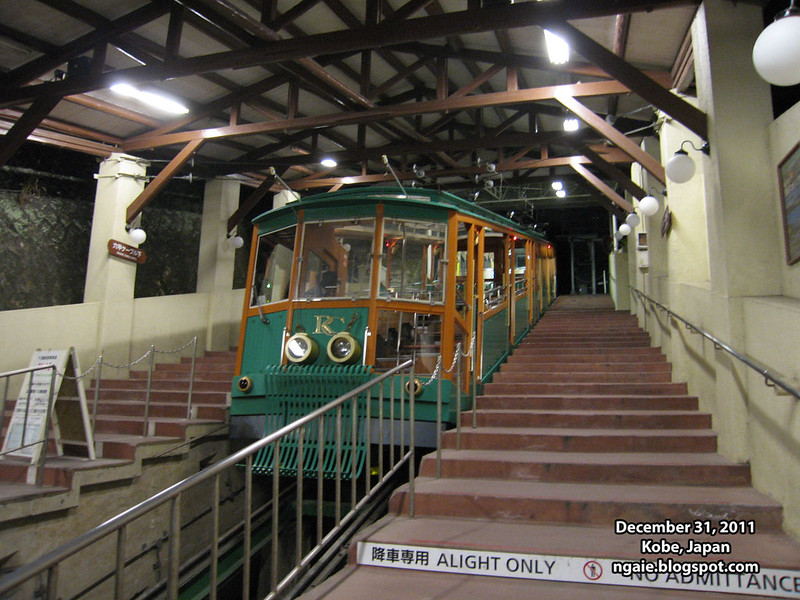
I brought along my Nintendo 3DS which has a built-in pedometer and on that day I walked around 29,000 steps!
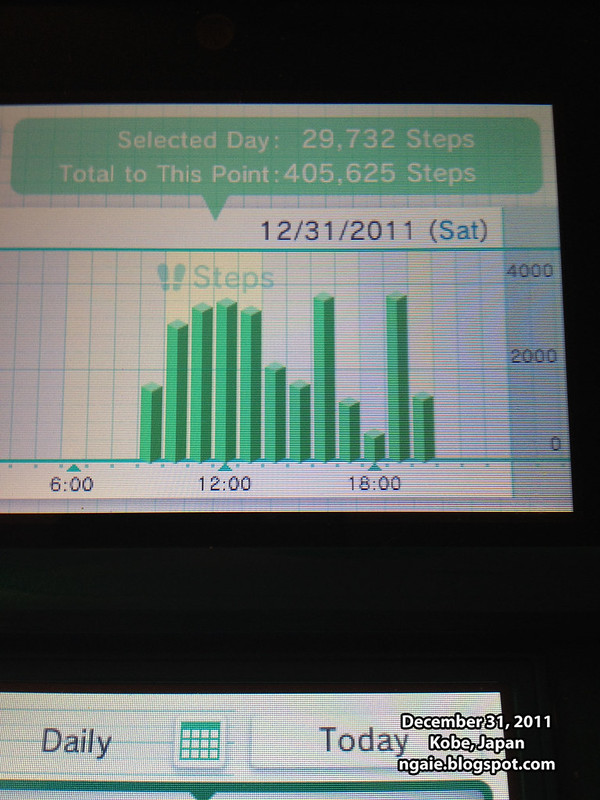

1 comments:
May i know how long to walk from Arima Onsen to the Ropeway station?
Thanks
Rei
Post a Comment